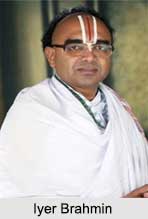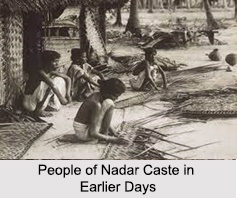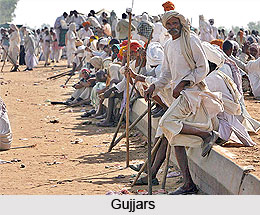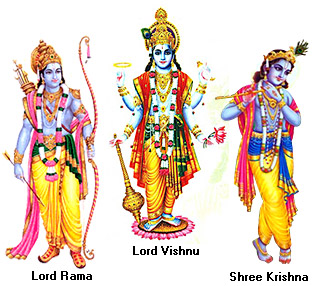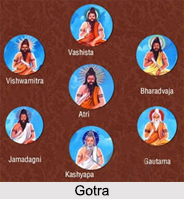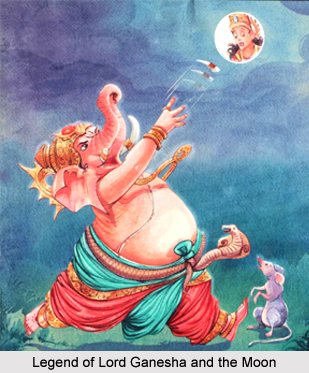 The Legend of Lord Ganesha and the Moon is a very popular tale and is related with the festival of Ganesh Chaturthi. Lord Ganesha is the Remover of Obstacles and is the most renowned Hindu Gods in India and abroad. He is extremely fond sweet balls of rice known as Modaka. Once on an auspicious day, he went to several houses to accept the offerings of the sweet. After a having a big meal of the modakas and laddoos, Lord Ganesha mounted his vahana, the holy mouse (shrew), and started to depart after sunset. Suddenly a snake appeared and the mouse got petrified. The sacred mouse tripped as a result of the snake and Lord Ganesha fell down on his back. The stomach of the deity burst open due to the impact and all the sweets came out of his stomach. However, Lord Ganesha gathered all the modakas and stuffed it back inside his stomach. Moreover he caught the same snake and tied it around his waist to hold it together.
The Legend of Lord Ganesha and the Moon is a very popular tale and is related with the festival of Ganesh Chaturthi. Lord Ganesha is the Remover of Obstacles and is the most renowned Hindu Gods in India and abroad. He is extremely fond sweet balls of rice known as Modaka. Once on an auspicious day, he went to several houses to accept the offerings of the sweet. After a having a big meal of the modakas and laddoos, Lord Ganesha mounted his vahana, the holy mouse (shrew), and started to depart after sunset. Suddenly a snake appeared and the mouse got petrified. The sacred mouse tripped as a result of the snake and Lord Ganesha fell down on his back. The stomach of the deity burst open due to the impact and all the sweets came out of his stomach. However, Lord Ganesha gathered all the modakas and stuffed it back inside his stomach. Moreover he caught the same snake and tied it around his waist to hold it together.
Seeing this incident, Chandra, the moon, started laughing and Lord Ganesha became infuriated and agitated and thought to punish Chandra Deva. He broke one of his tusks and threw it at the moon and as a result the moon lost its glow. As Chandra went away the entire world became engulfed in darkness. Ganesha cursed that Chandra would not appear in heaven and would never shine at night again. Moreover the deity announced that no one shall view the moon on the day of Ganesh Chaturthi. If any person dares to look at the moon, then he will earn a bad repute and censure.
As the world remained dark, the people became terrified and bemoaned. The elderly people complained and young lovers grieved and lamented. As the sun remained bright even after nightfall, the people on earth could not sleep. Further more, all the gods and deities in heaven also became confuse as it was intolerable for them as well. Thus all the gods went to the abode of Lord Ganesha and prayed to him. The Moon also asked for his forgiveness. Ganesha, the Remover of Obstacles, complied with their request, but declared that Chandra will not be permitted to shine brightly every night, as it did before the incident. The moon would wax and wane and would alternate between a dark fortnight and a bright fortnight. Each of these periods will end and begin with a full moon and the new moon.
Therefore, it is still believed by the devotees that it is unlucky to view the moon on the day of Ganesh Chaturthi in the month of Bhaadrapad.










